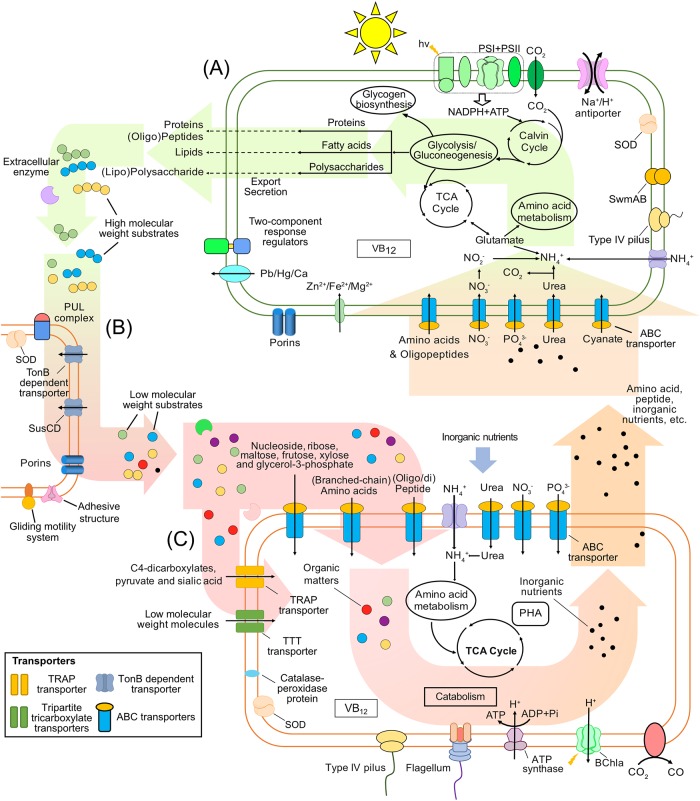FIG 5.
Schematic of inorganic and organic nutrient cycling in the Synechococcus (A), Flavobacteria (B) and Alphaproteobacteria (C) coculture system. The dominant detected metabolic processes observed for bacterial populations in the system are shown. Synechococcus is the primary driver of the coculture system functioning, and its dominant metabolic processes comprise inorganic nutrient uptake, photosynthesis, and organic matter biosynthesis and release. Two flavobacterial populations within the system corresponding to Muricauda and Winogradskyella strains, in addition to a member of the SM1A02 group exhibited specific propensities toward the initial degradation of complex compounds and biopolymers, as indicated by abundant TBDT, GH, and peptidase proteins in their proteomes. The alphaproteobacterium Oricola sp. Bin5 population mainly utilizes low-molecular-weight dissolved organic matter, including by-products from flavobacterial population metabolism, via their use of ABC, TRAP, and TTT transport systems. Thus, the bacterial members of the coculture system exhibit complementary metabolisms that operate in the degradation of Synechococcus-derived organic matter and nutrient cycling within the coculture system. PSI, photosystem I; TCA cycle, tricarboxylic cycle; VB12, vitamin B12; SOD, superoxide dismutase. The background arrows indicate the potential material and energy flows detected in the proteomic data.

